Opinion: Pause HISD’s plan to centralize school funding
In this Houston Chronicle op ed, Jessica Swanson and Marguerite Roza urge the Houston school board to take the time to ensure a full public vetting of the superintendent’s proposal to centralize school funding.
Do Districts Using Weighted Student Funding Formulas Deliver More Dollars to Low-Income Students?
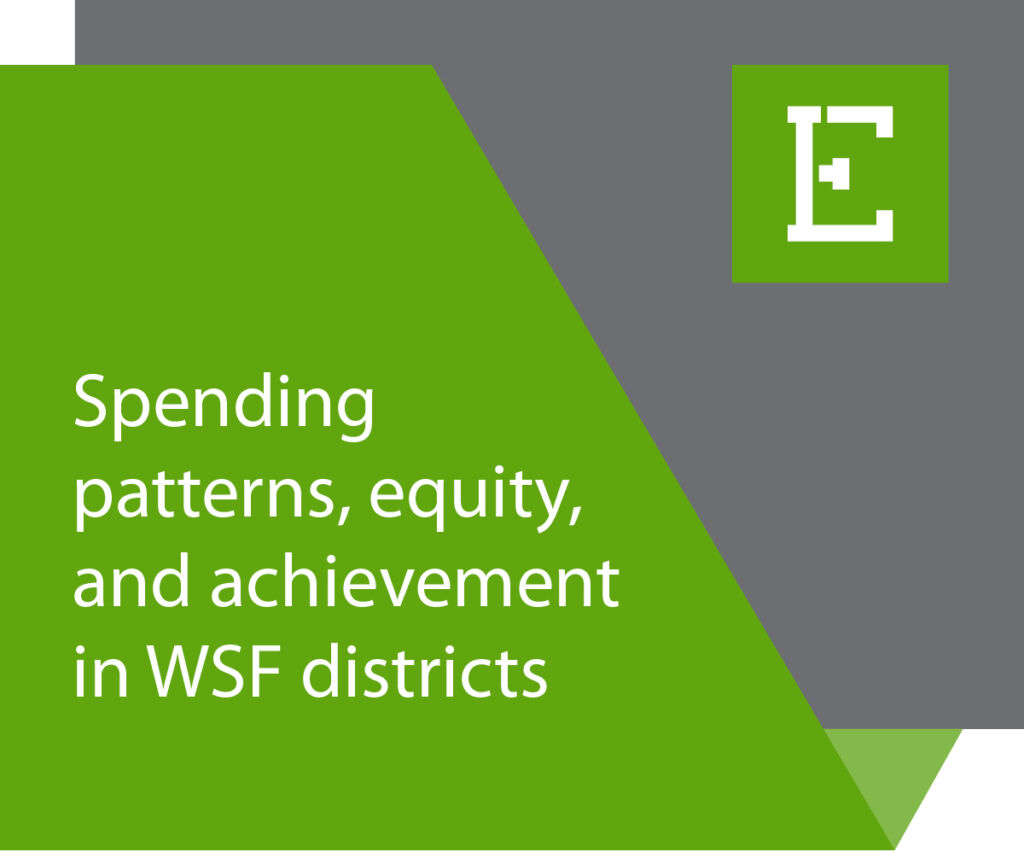
This working paper examines how equitably 20 WSF districts distribute dollars to their schools as measured against a cohort of 20 comparable districts that use a traditional, centralized staffing model.
Variation Is the Norm: A Landscape Analysis of Weighted Student Funding Implementation

This cross‐district comparison of 19 districts finds commonly cited reasons for adopting weighted student funding (equity, transparency, and school‐level spending flexibility). However, there is no standard WSF formula and districts are implementing it quite differently.
How Federal Education Aid Can Tackle The K-Shaped Learning Recovery: Let’s start with $3000 Per Disengaged Student.

In this op-ed, Marguerite Roza proposes a separate, flexible sum targeted at helping students for whom pandemic schooling isn’t working.
Lessons Learned: Weighted Student Funding

This brief summarizes findings from a three-year, U.S. Department of Education-funded research study analyzing the use of weighted student funding (WSF) at the district and state level.
Spending patterns, equity and achievement in districts using weighted student funding

Edunomics Lab’s findings from a three-year, Institute of Education Sciences study titled “How do Spending Patterns Change with Weighted Student Funding (WSF), and What’s Happening to Equity and Achievement, Particularly for Poor and At-Risk Students?”
Taking Stock of Principals’ Role in Weighted Student Funding Districts

In this brief, based upon a 2017-18 survey of 639 principals in 14 school districts implementing weighted student funding, we find that principals are actively engaged in the budget process and utilize their flexibilities, but often do not come into their role with the financial leadership training to carry out those tasks.
How States Can Put Students at the Center of Their School Funding Formulas

In this Hunt Institute “Making Sense of NC School Funding” blog, Marguerite Roza provides a national perspective on how states approach school funding.
The Big Bet on Adding Staff to Improve Schools Is Breaking the Bank

By going all-in on staffing, we’ve crowded out other potential investments that can positively impact student learning. In this paper, Marguerite Roza writes that competing strategies should be viewed through the lens of which can do the most for students with the limited dollars at hand.
Chicago’s Teachers Union Agreed to Give Spending Control to Principals. Now, the Union Is Striking to Take It Away

Chicago teacher contract negotiations stalled over who controls staffing decisions in schools. In this commentary, Marguerite Roza explains why principals should be entrusted to make the spending decisions that best serve their students.
Funding for Students’ Sake: How to Stop Financing Tomorrow’s Schools Based on Yesterday’s Priorities

Student-based allocation (also known as weighted student funding) provides the most equitable, efficient, and flexible path toward increased productivity. This brief explains why it is a good idea to allocate resources on the basis of students, and measures several states’ progress toward doing so.
L.A. District Is Asking for a $500 Million Parcel Tax. In Return, Let the Schools Decide How to Spend Their New Funds

In this commentary The 74, Marguerite Roza and Anthony Drew note that many of the country’s largest school districts have shifted to a decentralized funding model, allocating funds to schools based on student needs, and boosting equity and transparency in the process. They urge LAUSD leaders to follow suit.
Weighted Student Funding Is On The Rise. Here’s What We Are Learning

In this blog, Marguerite Roza discusses initial findings from our IES-funded research study that seeks to document the range of WSF formulas and detail how they are being implemented in school systems around the nation.
DeVos Proposed $50 Million for Districts to Decentralize Federal Money, to Put Schools in the Driver’s Seat. It’s a Smart Idea

In this commentary in The 74, Marguerite Roza urges legislators to consider a proposed pilot program to give school leaders and staff a say in how federal resources are used in their schools
Webinar: An Introduction to Student-Based Allocation

Designed for district and community leaders, this webinar shares how student-based allocation (SBA) works, why districts use SBA, what SBA formulas look like, and what steps and resources districts can take and tap to move toward SBA.
Taking stock of California’s weighted student funding overhaul: What have districts done with their spending flexibility?

In 2013 California adopted the Local Control Funding Formula (LCFF) to drive more resources to students with higher needs, create more spending flexibility, and let districts decide how to spend substantial new dollars. Our analysis examines financial data from nearly all California school systems to clarify how their spending choices changed in the first three years of the new state funding law.
Did districts concentrate new state money on highest-needs schools? Answer: Depends on the district.

Our analysis of eight districts takes a first look at whether CA districts did, under LCFF, allocate a larger share of their new funds to their highest-needs schools.
California’s weighted student funding formula: Does it help money matter more?

As California’s LCFF enters Year 5 of implementation, this brief analyzes whether we are seeing an improved relationship between spending and outcomes.
Analyzing early impacts of California’s Local Control Funding Formula

In 2013, California adopted the Local Control Funding Formula, shifting control over spending decisions from the state legislature to local school districts and eliminating many state-imposed spending rules. This three-part series analyzes early impacts of the LCFF, one of the nation’s largest weighted student funding (WSF) overhauls to date.
Student Based Allocation District Collaborative Meeting

Edunomics Lab hosts a monthly virtual meeting of district finance leaders to share knowledge and solve challenges around student-based allocation practice and collectively produce research that districts need and want. These resources are from an in-person convening of the SBA Network plus other districts interested in learning more.
Productivity Improvements Paper Series

These five Rapid Response briefs model the costs of productivity improvements in K-12 education, including changes in staffing ratios, the impact of late-career teacher pay raises on pension debt, and paying the best teachers more to teach more students.
Productivity is sometimes seen as a dirty word in education
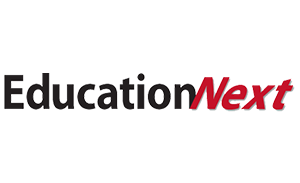
This article explores how school systems can improve productivity even when so much of what matters—the human variables and relationships in student learning—can’t be centrally managed and scaled across schools.
Title I: Time to Get It Right

In this brief on the landmark federal law’s 50th anniversary, we offer five key principles to help policymakers revise Title I so that it fulfills its promise of augmenting funding for poor students.
The Phantom Menace: Policies that Protect Districts from Declining or Low Enrollments, Drive Up Spending and Inhibit Adaptation

This paper examines the practice of states funding school districts for students who do not attend school there. Aimed at “protecting” districts from enrollment fluctuations, the practice drives up spending and inhibits adaptation.
Student Based Allocation 101
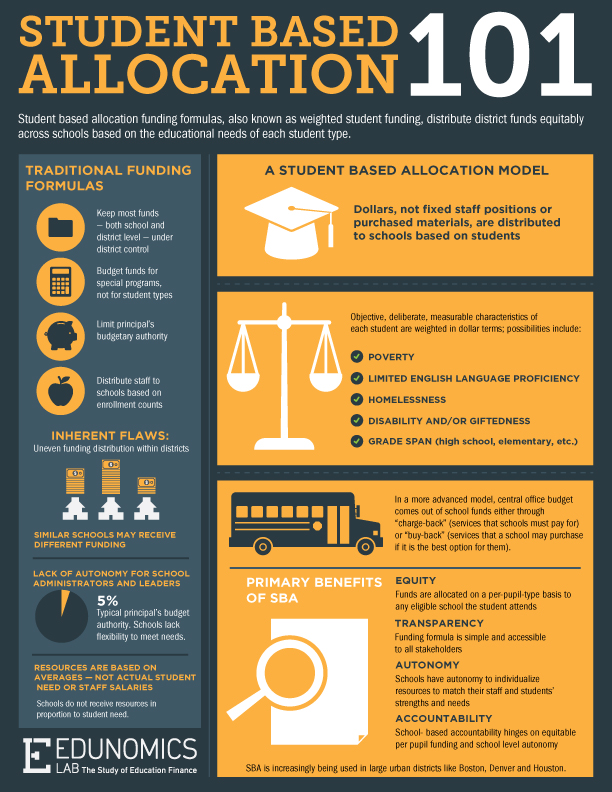
This one-page infographic explains what student-based allocation is, how it differs from traditional funding formulas and what its primary benefits are.
Can decentralization improve Seattle schools?

In this op-ed, we argue that when the district decides what positions to fund in a school—rather than the school being empowered to decide based on its community priorities—it destroys goodwill and trust in the school system.
Denver Public Schools: Making More Money Follow Students

This two-page brief outlines how Denver Public Schools has steadily increased the amount of district funds funneled through the student based allocation formula the school system adopted in 2008. In fiscal 2014, the district allocated $3235 million, or approximately 38 percent, of its $865 million budget.
What Portion of District Funds Follow Students?

Part of our ongoing study of budgets in systems implementing student based allocation, in this four-page brief we analyze 12 district budgets and find that the systems allocate roughly 24 to 42 percent of their funds through an SBA formula.
Boston Public Schools: Weighting What Matters

In this three-page brief, we analyze the share of district dollars Boston Public Schools funneled through its student based allocation formula, adopted in 2012. In fiscal 2014, the district allocated $3235 million, or approximately 38 percent, of its $865 million budget through the formula.
Funding for Student’s Sake: How to Stop Financing Tomorrow’s Schools Based on Today’s Priorities
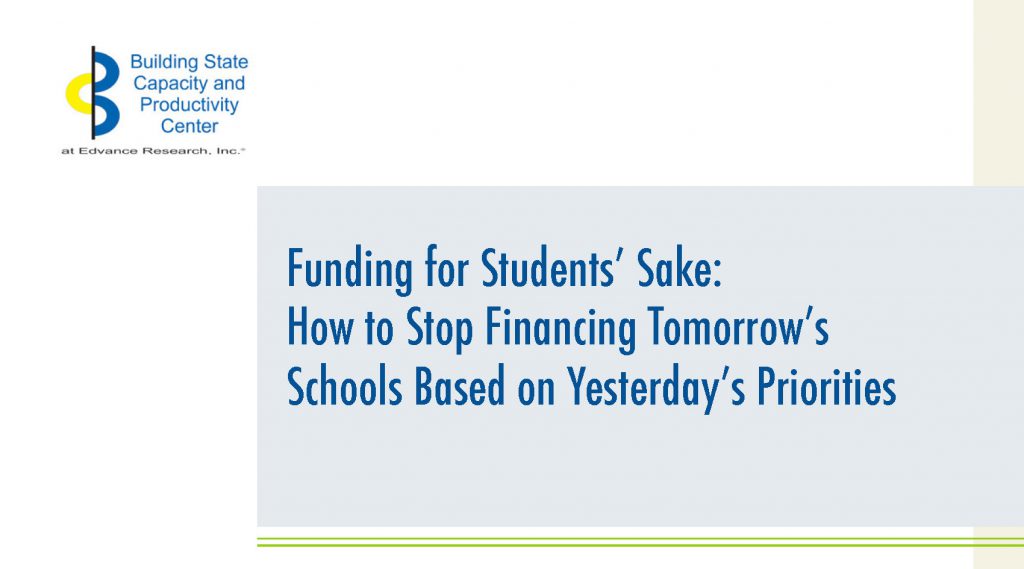
Most states make major changes in their allocation models only every two decades or so. In this paper, we explore how states can make the most of their redesign to get better outcomes for the money.
SEA of the Future: Building the Productivity Infrastructure

This publication introduces the “productivity infrastructure” the building blocks for an SEA committed to supporting productivity, innovation, and performance—from the state chief to the classroom.
How much money follows the student in WSF (aka SBA) districts?

In this presentation at the annual Association for Education Finance and Policy conference, we share our findings that the percent of total funds allocated via student based allocation (%SBA) ranges from a low of 23 percent to a high of 45 percent among ten urban school districts studied.
VisionSBA: K-12 Financial Modeling Tool

VisionSBA provides education leaders with a unique outlook on spending by school level within a district, delivering insight into relative spending across schools adjusted for each school’s actual mix of students. This interactive tool developed by Marguerite Roza and Jim Simpkins answers the question: “How much does each school spend relative to all other schools in this district taking into account its particular mix of students?”
The Case Against High School Sports

In this article published by The Atlantic, author Amanda Ripley draws on Marguerite Roza’s research as she describes the role of high school sports in the American education system, how current resource allocations favor sports over academics, and consequences as American students fall behind in international rankings.
Funding Phantom Students

This brief describes a common practice that inhibits both efficiency and productivity: funding students who do not actually attend school in funded districts and how this is often overlooked by state leaders.
Student-Based Allocation to Enable School Choice

This brief explains the need for student-based allocation to enable student choice and portable funding across schools within districts.
Understanding Student-Weighted Allocation as a Means to Greater School Resource Equity
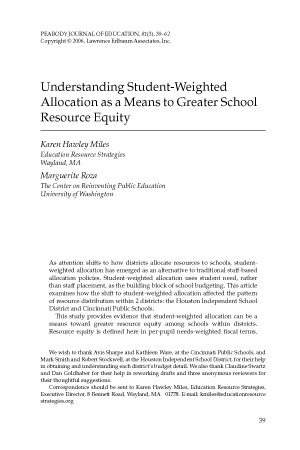
This study examines Houston ISD and Cincinnati Public Schools, providing evidence that student-weighted allocation can be a means toward greater resource equity among schools within districts.
Pennywise and Pound Foolish in Education
The authors suggest that weighed student funding would show exactly where the money is going and foster transparency and accountability for performance, thereby potentially closing the gaps in local public service quality between the privileged and the disadvantaged.
Leveling the Playing Field: Creating Funding Equity Through Student-Based Budgeting
This report traces Cincinnati Public Schools’ process of moving to a system of student based budgeting: funding children rather than staff members, and weighting the funding according to schools and students’ needs.

